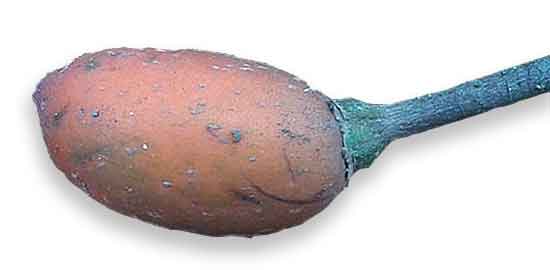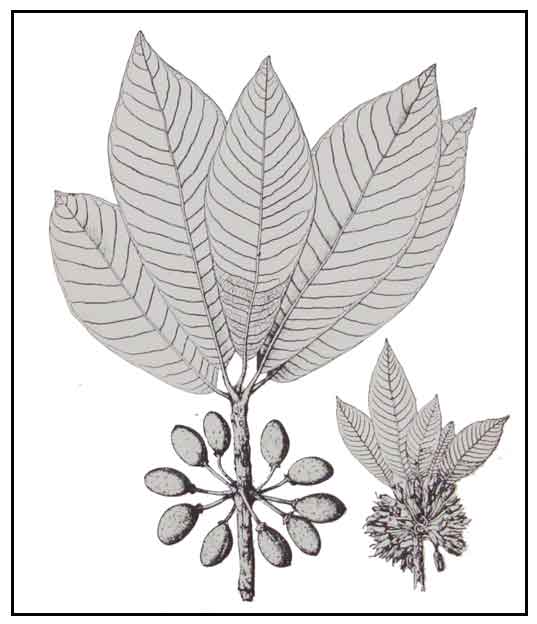
Family • Sapotaceae
Betis
Madhuca betis (Blanco) J.F.Macbr.
| Scientific names | Common names |
| Azaola betis Blanco | Bakaiau (Pang.) |
| Bassia betis (Blanco) Merr. | Baniti (Bik.) |
| Illipe betis (Blanco) Merr. | Banitis (Bik.) |
| Isonandra betis (Blanco) Baehni | Betis (Pamp., Tag., Bik.) |
| Madhuca betis (Blanco) J.F.Macbr. | Manilig (Mag.) |
| Madhuca philippinensis Merr. | Pappagai (Ibn.) |
| Payena betis (Blanco) F.-Vill. | Pappagan (Ibn.) |
| Piañga (Ibn., Ilk.) | |
| Piañgan (Ibn.) | |
| Madhuca betis (Blanco) J.F.Macbr. is an accepted species. KEW: Plants of the World Online | |
Updated February 2024 / April 2016
![]()
 |
PHOTOS / ILLUSTRATIONS |
| IMAGE SOURCE: Illustration from Minor Products of Philippine Forests / Vol 2 / William Brown and Arthur Fisher / Figure 56 / Bassia betis (Betis) Source of betis oil / 1920 / Modified by G. Stuart |
| OTHER IMAGE SOURCE: Sapotaceae : Madhuca betis / Fruit / Copyright © 2017 by P B Pelser & J F Barcelona (contact: [email protected]) [ref. DOL123598] / Non-Commercial Use / Image modified / Click on image or link to go to source page / Phytoimages.siu.edu |
| OTHER IMAGE SOURCE: Betis tree / Copyright © Cainta Plant Nursery / Non-commercial use / Image modified / Click on the link to go to source page / Cainta Plant Nursery |
| Additional
Sources and Suggested Readings (1) Madhuca betis / KEW: Plants of the World Online (2) Madhuca / Wikipedia |
• |
DOI: It is not uncommon for links on studies/sources to change. Copying and pasting the information on the search window or using the DOI (if available) will often redirect to the new link page. (Citing and Using a (DOI) Digital Object Identifier) |
| List of Understudied Philippine Medicinal Plants |
| New plant names needed The compilation now numbers over 1,300 medicinal plants. While I believe there are hundreds more that can be added to the collection, they are becoming more difficult to find. If you have a plant to suggest for inclusion, native or introduced, please email the info: scientific name (most helpful), local plant name (if known), any known folkloric medicinal use, and, if possible, a photo. Your help will be greatly appreciated. |
• |
 |



 Uses
Uses 